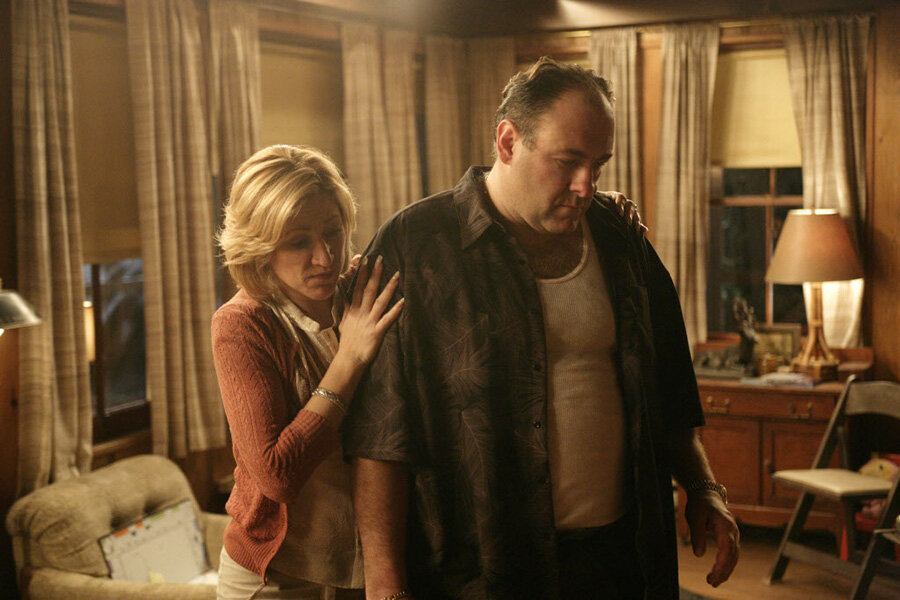How watching a TV show has become more like reading a book
Loading...
A weekly engagement? No. A habit that you’re sharing with millions of other viewers? Not that, either.
As binge-watching continues, TV viewers are curling up on the couch like they would with a good book. They are seeking out old and new programs to watch in season-long gulps. While programs have been syndicated for decades – how many times have you seen "The Twilight Zone" reruns? – the fact that programs are now available on streaming services from companies such as Netflix and Hulu (as well as the networks themselves) means that programs from the first golden age of television (that would be the 1950s) up until the present are all at a viewer's fingertips.
Binge-watching has been around long enough to be an American institution, according to 2016 data from consulting company Deloitte, which reported that 70 percent of TV viewers now binge-watch shows. In that way, says Robert Thompson, director of the Bleier Center for Television and Popular Culture at Syracuse University, TV shows are consumed now like books – stop and start whenever you please and, in the case of watching an old show, know a conclusion is coming when you want it.
That shift in audience consumption creates new longevity – a.k.a. classics in the book industry – for shows that ended years ago on broadcast or cable TV. There's now a deep archive – or library – of old TV programs instantly available. And it doesn’t matter to viewers that “The Sopranos” or “The Wire” hasn’t been on the air for years and that there are no signs of revival or new installments in a series.
“People continue to read Charles Dickens books – which by the way many of them were [originally] serialized, just like television,” Professor Thompson says.
In the same way readers buy every book by their favorite author, some TV fans binge-watch old shows made by a particular director or featuring a favorite actor, says Ross Brown.
“They say, oh, I love that actor and I want to see that actor in that other show,” says Mr. Brown, the program director for the MFA in writing and contemporary media at Antioch University in Santa Barbara.
Sometimes the streaming popularity of an old show can lead to new episodes. Fox’s “Arrested Development” was plagued with low viewer ratings throughout its original run (2003-2006) but became a cult hit before Netflix produced another season in 2013. The streaming service did the same with the (2000-2007) WB show “Gilmore Girls,” releasing a mini-revival in 2016 after enough Netflix fans flocked to the classic episodes.
We’ve now transitioned from TV shows airing only once – those millions of viewers who tuned in for 1977’s “Roots” fully expected they could never see it if they didn’t watch it that night – to TV being available as reruns, then VHS sets, then DVD boxes (Mr. Brown remembers getting a DVD set of “The Wire”), and, now, endlessly streaming.
Brown sees the availability of so many classic TV shows as an educational tool. “I'm especially grateful as a professor now in trying to teach the next generation of writers and directors and producers that there's this instant library available of stuff that you can say, 'You really ought to take a look at "The Sopranos," ' ” he says.
For subscription services like HBO Go, Thompson says that older shows are part of a library that helps persuade viewers to keep subscribing, by impressing them with the breadth of the network’s offerings.
“[Shows] serve their purpose as first-runs, and then they become valuable inventory,” he says. “Valuable enough that when you go on to HBO's site, it's right there. It's an older show, but it's right there, trying to continue to please you so you don't get rid of your subscription – and to have a deep enough bench of material so that people who don't subscribe finally throw up their arms up and do.”
He sees this approach spreading, with networks launching streaming services like CBS All Access and NBC’s comedy service Seeso. (While shows like CBS’s “I Love Lucy” and NBC’s “The Office” are available on CBS All Access and Seeso, they’re also available on streaming services such as Hulu and Netflix.)
“If you have to convince people that they're going to pay a Netflix subscription and a CBS All Access subscription and an HBO Go subscription, you better have a lot of stuff on there,” Thompson says. “So I think all these places are looking for … a body of content deep enough to appeal to a wide range of people.”
Will the archive aspect – the ability of a viewer to discover a show years in the future – affect how these shows are produced?
Brown predicts shows might start avoiding contemporary references so as to appear timeless. “In comedies, their topical kinds of jokes that would age a show very quickly,” he says.
But Thompson says TV content creators have always dreamed about a lasting legacy – and syndication, for example, has long offered a second life to successful shows.
“I think everybody hopes that when they make a sitcom, it's going to become a ‘Seinfeld’ or a ‘Friends’ or a ‘Lucy’ or even an ‘Andy Griffith Show,’” he says, where reruns are aired for years in syndication.








